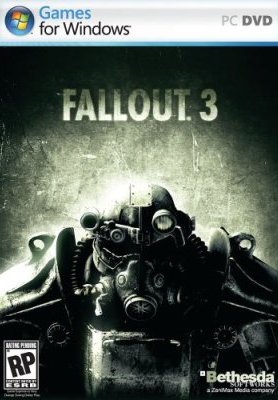Fallout 3 Preview
-
Category: PreviewsHits: 13004

Article Index
Page 1 of 4
Introduction Fallout 3, the sequel to the 90's RPG classics Fallout 1 and 2, has been in pre-production since Bethesda Softworks purchased the rights to work on the title in July of 2004. The latest sequel has had a bumpy ride even before Bethesda started with its latest production after finishing The Elder Scrolls IV: Oblivion. The media reception has been nothing short of ecstatic, while discussion across the web shows that there are some doubts among consumers.
All said and done, the game surely has captivated the interest of many. There have already been many previews based on the same demo, but you can never have too much information. So I sat down, pen at the ready, as Pete Hines took control of the demo at the 2007 Games Convention in Leipzig, Germany to show us around Bethesda's imagining of Interplay's classics.
The Demo
Note that this is also the beginning of the Fallout 3 game, so slight spoilers ahead.
For their iteration, Bethesda has chosen to set the game in 2277 on the East Coast of post-apocalyptic America. The game begins with a still-slide intro much like the original games, although the black and white stills are replaced with grainy postcard-style stills as Ron Perlman, narrator of the originals, reads aloud his "war never changes." speech.
As he finishes, the game would normally move into a one-hour tutorial/character creation session which guides the character from birth to his 19th birthday. This is somewhat shortened for the demo, as Pete Hines showed off a few specific segments: the conversations with the protagonist's father (voiced by Liam Neeson), a walk through the vault including a look at a gang of greasers bullying a girl, and the final vault door opening sequence and the escape from the vault.
The primary purpose of this sequence is character creation, as you determine the character's looks and stats in several stages from birth through puberty. It also serves as an introduction to the game's mechanics and structure, in this demo with the example of the choice offered when the protagonist sees the girl being bullied: do you help her or join the bullies? Not exactly a deep moral choice, but it's a choice.
The protagonist exits the Vault after finding out his father has disappeared and the Overseer is looking for him, suspecting that he had something to do with it. In front of the Vault Door lie a few corpses of "people they wouldn't let in" holding signs saying "let us in motherfuckers!" As he exits the tunnel, the glare from the sun temporarily blinds him before offering a nice panoramic view of the desert and ruins surrounding him.
Combat is on show afterwards, as the protagonist runs into a couple of giant ants. Pete Hines shows you can pause combat to pull up a grid-based aiming screen to target separate body parts, with a percentage to hit or miss. Shooting in the leg will slow the enemy down, shooting in the antennae in case of ants can confuse them. Also shown in this ruined town, Springvale, is how the protagonist can shoot a car and make its nuclear engine explode in a mini-mushroom, taking some ants with it.
At this point, the usage of radiation is partially shown. When blowing up the car, the protagonist is slightly radiated. In much the same way the protagonist is radiated when taking a drink of water from a nearby fire hydrant, which also heals him slightly.
The protagonist reaches the town of Megaton, the closest settlement to the Vault. It is "built in the crater of an unexploded nuclear bomb." Its style is much like Junktown in Fallout 1 or Bartertown in Mad Max 3, with ramshackle huts and pieced-together walls - a lot of it built with wreckage from a crashed airline carrier.
After being scanned by a Robby-the-Robot-esque Protectron the protagonist is allowed entrance to Megaton. Dialogue is on display next, as Pete Hines shows the structure and display in two conversations with the sheriff and later with a shady character, Mr Burke. Noticeable is that dialogue looks and feels basically the same as Oblivion, with graphically prettier talking heads. There's a wide choice of dialogue options, all showing full lines of text and some showing a percentage of success in case of lying or threatening. It's also shown how the NPCs react as the protagonist insults the sheriff ("Nice hat, Calamity Jane") or tries to get some extra bottle caps for fulfilling the task from Mr Burke (successfully in this case).


